Walnut and its cultivation

Walnut is considered a healthy and tasty product. It is often used in a wide variety of dishes. Today we will talk about how to plant and grow such a plant in a summer cottage.
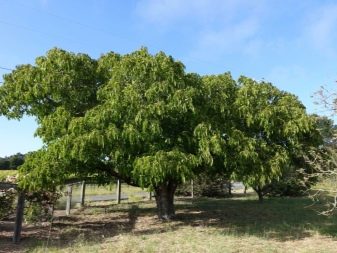
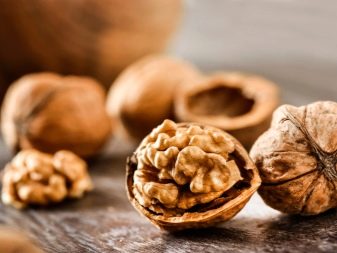
general description
This culture looks like a large tree, the height of which can reach 25 meters. The thick trunk of the plant is covered with a strong gray bark. The branches form an extensive crown with a diameter of about 20 m. The leaves are compound, they consist of 2 or 5 pairs of elongated ovoid leaf blades. Their length varies from 40 to 70 millimeters. Leaves bloom together with flowers. Flowers are small and dioecious. Their colors are greenish. The vegetation is monoecious. Stamen flowers consist of a six-lobed perianth, as well as stamens (from 12 to 18 pieces). The flowers are collected in a group of small dangling earrings.
Pistillate flowers are sessile. They are located on the tops of annual branches, they can be solitary, sometimes they gather in small groups. The fruit looks like drupe nuts. They are a small bone. Its shape can be either spherical or ovoid. When it reaches full maturity, the peel begins to dry out, and then bursts into 2 separate pieces and separates. The shell contains an edible seed. Such a plant blooms, as a rule, in May, sometimes it blooms again in June. The fruits ripen fully in early or mid-autumn. They can vary significantly depending on their size, chemical composition, and other characteristics.
The culture is renewed by a vegetative or seed method. Already in the first year, the seedlings form a powerful and strong taproot. From 4-5 years of age, horizontal roots grow. Mature trees have a strong and developed root system. In the wild, such a culture grows in the western Transcaucasia, China, and Asia Minor.
The largest specimens can be found in the south of Kyrgyzstan. Some species can be grown in Belarus, in the Urals.

Popular varieties
Now we will take a closer look at what varieties of walnuts are, what are their features.
- Elegant. This species is considered early maturing. The crop can be harvested at the end of September. The height of an adult and healthy tree can reach 5 meters. The plant is branched, its foliage is dense. The graceful nut is a drought tolerant variety. In addition, it is resistant to both infections and pests. But with severe frosts, wood and young buds can be damaged. The tree begins to bear fruit in the 5th year after planting. One core weighs approximately 10-12 grams.
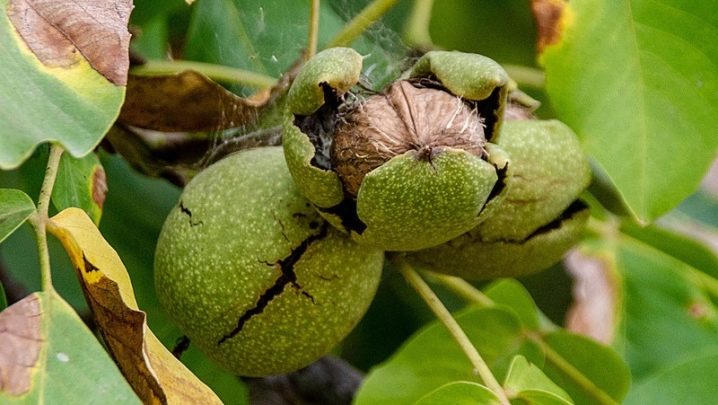
- Dessert. This species can grow up to 3 meters in height. The crown of an adult tree is rather spreading and wide. It should be noted that the variety is afraid of frost, sudden temperature changes, so it should be planted only in the southern strip. The first fruits can appear on the branches 4 years after planting. One healthy tree can yield up to 22 kilograms of nuts. Harvesting is most often done at the end of September.
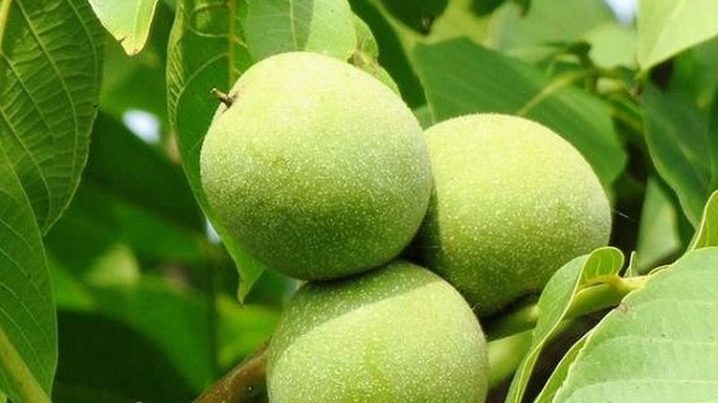
- Black walnut. In the wild, this variety can only be found in North America. In Russia, there are only some subspecies of black walnut. The tree can be 37-40 meters high. Vegetation easily tolerates cold, although young seedlings may die during sudden temperature changes.The first fruits can be obtained only after 8-10 years.
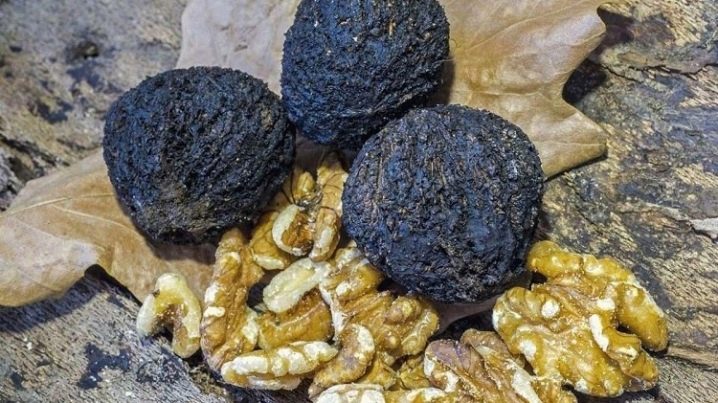
- Harvestable. The tree can be up to 6 meters high. The first crop can be harvested 4 years after planting. This species is considered mid-season. Such a walnut is not afraid of frost at all, it has excellent immunity. But at the same time, the tree often suffers from brown spot. Up to 25 kilograms of ripe nuts can be harvested per season. Each core weighs an average of 10 grams.
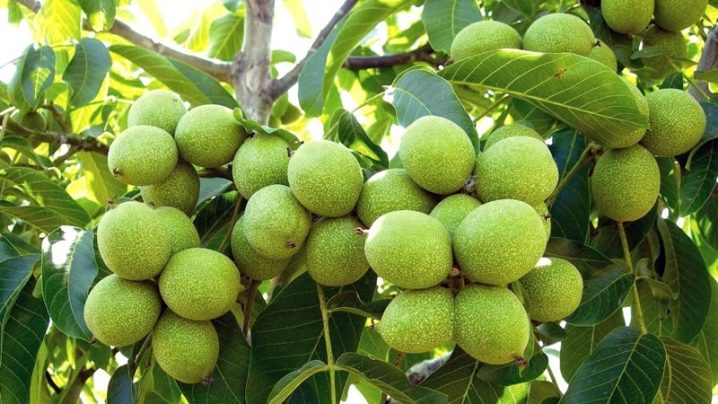
- "Giant". The height of an adult tree is up to 7 meters. Vegetation begins to bear fruit 6 years after planting. "Giant" easily tolerates even severe frosts, has increased resistance to diseases and pests. In addition, this variety has a high yield. Up to 40 kilograms of fruit can be harvested from one plant.
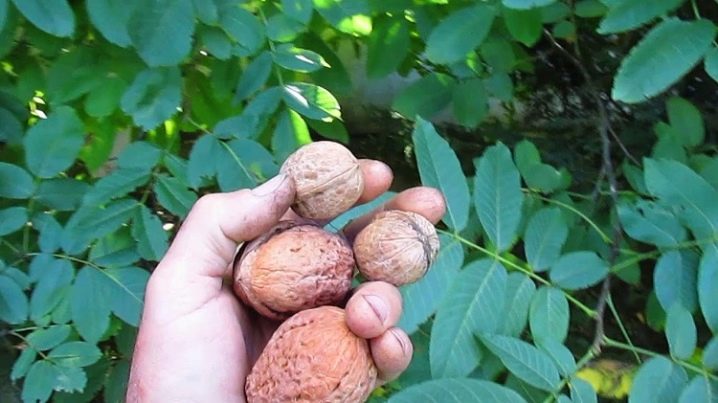
- "Aurora". The plant reaches a height of 6 meters. It begins to bear fruit in the 4th year after disembarkation. The yield level increases with each season. The weight of each ripe fruit averages 10-11 grams.
"Aurora" is rather difficult to endure drought and temperature changes. But at the same time, the variety has good resistance to infections and pests.
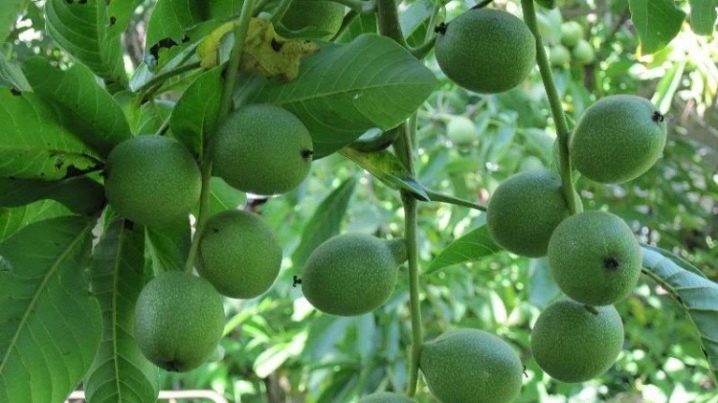
- "Ideal". This variety can boast of special frost resistance and high yield. During the growing season, the species bears fruit twice. Fruits can reach a weight of 10 to 15 grams. The kernels have a pleasant, slightly sweet aroma.
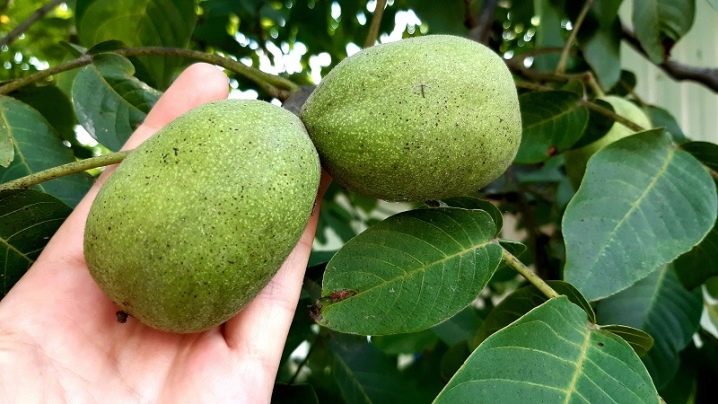
- Transnistrian. This mid-season variety also has good frost resistance and resistance to infections. Pridnestrovian has rounded fruits, the average weight of which is 11-13 grams. Their shell is very strong, the partitions are thin inside, they do not interfere with the separation of the nucleus at all.
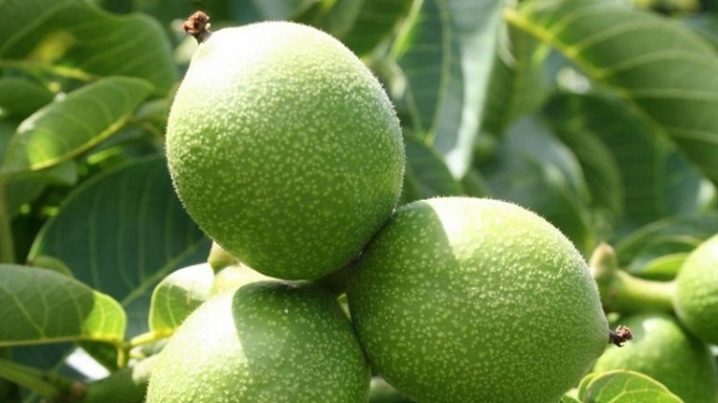
Landing
Now we will analyze how to properly plant a walnut in open ground near the house. It is important to find a suitable landing site. Well-lit areas will be the best option; they can be both flat and elevated. If you plant several such plants at once, then remember that the distance between them should be at least 8 meters. It is best to plant vegetation in the spring. If the soil is not nutritious enough, then you must first prepare it. First, they dig planting holes, their depth and width should be at least 1 meter. It is recommended to dig them out at the end of September.
Part of the dug soil (top layer) should be thoroughly mixed with peat, humus. And also there it is worth adding superphosphate (about 2 kg), wood ash (about 2 kg) and potash fertilizers (800 grams). The prepared pits are filled with the resulting mixture. After that, 20 liters of water are poured into the same place. In this form, everything is left until spring. Further work is resumed only in April. In this case, the soil from the pits is carefully removed. Then a strong and reliable support is driven into the bottom, the height of which should be about 2.5-3 meters. Next, the roots of young seedlings are dipped in a liquid composition of clay, rotted manure and water.
A drainage of small stones is poured at the bottom of each hole. Its thickness should be about 20 centimeters. A mound is formed from above from the prepared substrate. Later, the trees need to be planted in such a way that the root collar is about 4-5 cm above the ground. Then, the vegetation is sprinkled with earth from all sides at once. Immediately after planting, the trunk is watered. Each plant should have 20-25 liters of settled water. After all the liquid is well absorbed into the soil, the seedlings are tied to the previously installed supports. At the same time, the near-trunk zone is mulched with sawdust, the mulch layer should have a thickness of 2-3 cm.
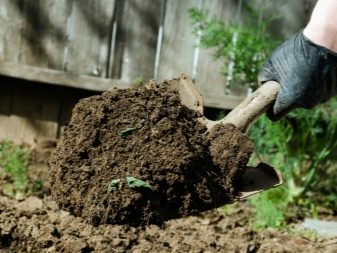
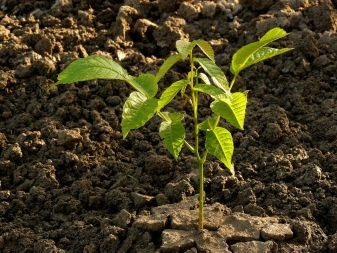
Growing care
Next, we will analyze how to properly care for such a nut.
- Watering. Watering is essential to grow a healthy and strong plant. Such a culture is very demanding on the level of humidity. Between May and July, it must be watered twice a month. Moreover, for 1 sq.m should have an average of 5 liters of liquid. In order to be able to use rainwater rationally, a roller (at least 15 cm thick) should be made around the trunks of sand or soil. At the end of the summer season, watering should be reduced to once a month.
- Top dressing. For the first 3 years after planting, the walnut will not need feeding. It will be quite enough for those components that were introduced during the disembarkation process. Further, during the growing season, such a culture will need potassium chloride (2.5 kg), ammonium salts (8 kg), superphosphate (9-10 kg). Fertilizers containing nitrogen are recommended for use in the spring, as well as in the first half of the summer season. Various potash masses and phosphates are best used between mid-summer and autumn.
- Pruning. This crop will need sanitary pruning. It is held in March before the start of the growing season. In the process of such a procedure, it is necessary to carefully remove all dried and diseased parts of the vegetation. In addition, the walnut also needs formative pruning. The crown should be formed after the bole reaches a height of 70-100 centimeters. This procedure is performed in October. In this case, the lateral growth is cut off, the skeletal branches are shortened by 15-20 centimeters. In any case, all gardening tools should be treated with disinfectants before starting work. All formed sections should also be lubricated with garden varnish.
- Wintering. The walnut will need preparation for the winter season. In late autumn, the near-trunk zone will need to be completely cleared of fallen leaves. After that, about 20-25 liters of water should be poured under the root. Further, before the onset of frost, the plants must be well insulated. To do this, the mulch layer should be increased to 15 centimeters. After that, compost or manure is placed on top.
Before the onset of winter, it is better to wrap vegetation younger than 5 years in burlap.
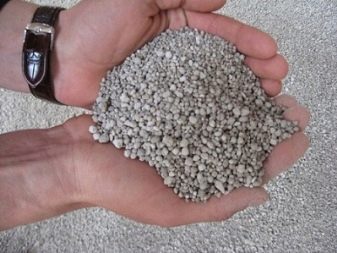
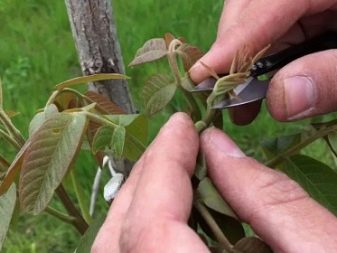
Reproduction
The walnut should be propagated by seed. Seedlings obtained in this way adapt to the climate and soil much faster and easier. Ripe fruits are stratified before germination. If the shell is too thick, then they are stored at a temperature of 0 to +5 degrees for three months. If the shell is thin, then at a temperature of + 10 ... 12 degrees - for one and a half months.
After the flaps open and the rudiments of sprouts appear, the fruits are planted in the ground to a depth of 10-12 centimeters. At the same time, the earth by this time should already warm up to 10 degrees Celsius. When sowing a significant number of nuts, trenches are immediately dug. Seed material is placed at a distance of 15 cm from each other. In the fall, it is better to transplant young growth into a greenhouse so that it does not die due to temperature extremes. In warm regions, such a plant is often propagated by grafting. In this case, a cut flap of the desired type is placed under the bark of the stock.
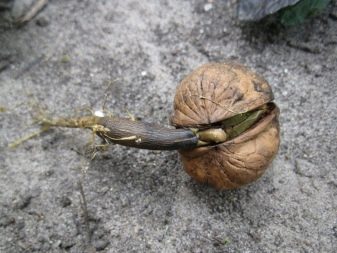

Diseases and pests
The plant is often affected by marsoniosis or bacteriosis. When infected, spots of gray, brown or black appear on the shoots and fruits, foliage. Most often, these diseases develop due to excessive humidity, improper irrigation regime, and also due to an excess of nitrogenous fertilizers. For prevention, it is necessary to constantly monitor agricultural technology, remove all dead bark in a timely manner, treat trees with a solution of copper sulfate or Bordeaux liquid. If the plant gets sick with root cancer, then small growths can be seen on the trunks. Such neoplasms will need to be carefully opened and cleaned with caustic soda.
Further, they are well washed with a large amount of clean, settled water. Sometimes the walnut is also affected by various harmful insects, including the larvae of white butterflies. Dendrobacillin solution (30%) can be used to kill all parasites. They are sprayed with the crown before or after the flowering period.If the vegetation has been affected by a nut mite, then it is better to treat it with strong acaricides, "Aktara" and "Kleschevit" will do. When aphids appear, the crown should be treated with Antitlin or Actellik. You can also make various medicinal tinctures at home.
Harvest time
The timing of harvesting largely depends on the region. But most often this period falls on the end of August - the end of September. You can pick a nut in a still green pericarp, or you can wait for it to fully ripen. In industrial gardens, walnuts are harvested when the green pericarp cracks.
After assembly, you can immediately start processing.
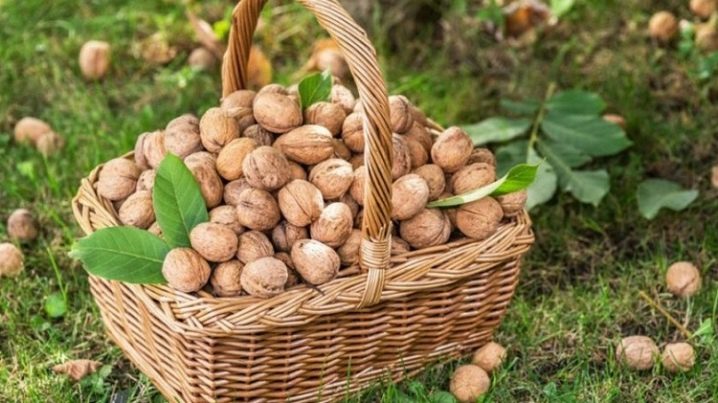









The comment was sent successfully.